
Introduction
Intel’s newest Coffee Lake processors are here! As with most cases, a release of new processors is accompanied with new motherboards. That’s why we’re here today. We’re going to take a look at one of MSI’s Z370 motherboards, the MSI Z370 Gaming Pro Carbon AC.

As with its named predecessors, the MSI Z370 Gaming Pro Carbon AC carries over the racing-inspired design of other motherboards in the Carbon range. Since this is one of top-end motherboards of MSI, the board comes with what you’d expect from a top range board such as RGB and WiFi connectivity. Here are the full specs of the MSI Z370 Gaming Pro Carbon AC from MSI’s website:
| Processor | • Supports 8th Generation Intel® Core™ Processors, and Intel® Pentium® and Celeron® Processors for Socket LGA1151 |
| Chipset | Intel® Z370 Chipset |
| Main Memory | • 4 x DDR4 memory slots, support up to 64GB |
| – Supports DDR4 4000+(OC)/ 3866(OC)/ 3733(OC)/ 3600(OC)/ 3466(OC)/ 3400(OC)/ 3333(OC)/ 3300(OC)/ 3200(OC)/ 3000(OC)/ 2800(OC)/ 2667/ 2400/ 2133 MHz Memory | |
| • Supports Dual-Channel mode | |
| • Supports non-ECC, un-buffered memory | |
| • Supports Intel® Extreme Memory Profile (XMP) | |
| Slots | • 3 x PCIe 3.0 x16 slots (support x16/x0/x4, x8/x8/x4 modes) |
| • 3 x PCIe 3.0 x1 slots | |
| Multi-GPU | • Supports 2-Way NVIDIA® SLI™ Technology |
| • Supports 3-Way AMD® CrossFire™ Technology | |
| Onboard Graphics | 1 x HDMI™ port, supports a maximum resolution of 4096×2160@30Hz, 2560×1600@60Hz |
| 1 x DisplayPort port, supports a maximum resolution of 4096X2304@24Hz, 3840X2160@60Hz,1920X1200@60Hz | |
| Storage | • Intel® Z370 Chipset |
| • 6 x SATA 6Gb/s ports* | |
| • 2 x M.2 slots (Key M) | |
| – Support up to PCIe 3.0 x4 and SATA 6Gb/s | |
| – Support PCIe 3.0 x4 NVMe U.2 SSD with Turbo U.2 Host Card** | |
| – M2_1 slot supports 2242/ 2260 /2280/ 22110 storage devices | |
| – M2_2 slot supports 2242/ 2260 /2280 storage devices | |
| – Intel® Optane™ Memory Ready for all M.2 slots*** | |
| * M.2 and SATA ports maximum support 1x M.2 PCIe SSD + 1x M.2 SATA SSD + 5x SATA HDDs. Please refer to page 34 for M.2 slots with examples of various combination possibilities. | |
| ** The Turbo U.2 Host Card is not included, please purchase separately. | |
| *** Before using Intel® Optane™ memory modules, please ensure that you have updated the drivers and BIOS to the latest version from MSI website. | |
| RAID | • Intel® Z370 Chipset |
| • Supports RAID 0, RAID 1, RAID 5 and RAID 10 for SATA storage devices | |
| • Supports RAID 0, RAID 1 for M.2 PCIe storage devices* | |
| * M.2 PCIe RAID volume can be created with M.2 GENIE. | |
| USB | • ASMedia® ASM3142 Chipset |
| – 1 x USB 3.1 Gen2 (SuperSpeed USB 10Gbps) Type-C port on the back panel | |
| – 1 x USB 3.1 Gen2 (SuperSpeed USB 10Gbps) Type-A port on the back panel | |
| • Intel® Z370 Chipset | |
| – 8 x USB 3.1 Gen1 (SuperSpeed USB) ports (4 Type-A ports on the back panel, 4 ports available through the internal USB connector | |
| – 6 x USB 2.0 (High-speed USB) ports (2 Type-A ports on the back panel, 4 ports available through the internal USB connectors) | |
| Audio | • Dual Realtek® ALC1220 Codec |
| – 7.1-Channel High Definition Audio | |
| – Supports S/PDIF output | |
| Wireless LAN | • Intel® Dual Band Wireless-AC 8265 card |
| – Supports Wi-Fi 802.11 a/b/g/n/ac, dual band (2.4GHz, 5GHz) up to 867 Mbps speed. | |
| – Supports Dual Mode Bluetooth® 2.1, 2.1+EDR, 3.0, 4.0, BLE, 4.2 | |
| LAN | • 1 x Intel I219-V Gigabit LAN controller |
| Internal I/O Connectors | – 1 x 24-pin ATX main power connector |
| – 1 x 8-pin ATX 12V power connector | |
| – 6 x SATA 6Gb/s connectors | |
| – 2 x USB 3.1 Gen1 connectors (supports additional 4 USB 3.1 Gen1 ports) | |
| – 2 x USB 2.0 connectors (supports additional 4 USB 2.0 ports) | |
| – 1 x 4-pin CPU fan connector | |
| – 1 x 4-pin water pump fan connector | |
| – 4 x 4-pin system fan connectors | |
| – 1 x Front panel audio connector | |
| – 2 x Front panel connectors | |
| – 2 x 5050 RGB LED strip 12V connectors | |
| – 1 x WS2812B Individually Addressable RGB LED strip 5V connector | |
| – 1 x CORSAIR Individually Addressable RGB LED strip 5V connector | |
| – 1 x TPM module connector | |
| – 1 x Chassis Intrusion connector | |
| – 1 x Clear CMOS jumper | |
| Back Panel I/O Ports | – 1 x PS/2 keyboard/ mouse combo port |
| – 2 x USB 2.0 Type-A ports | |
| – 1 x DisplayPort port | |
| – 1 x USB 3.1 Gen2 Type-A port | |
| – 1 x USB 3.1 Gen2 Type-C port | |
| – 4 x USB 3.1 Gen1 Type-A ports | |
| – 1 x HDMI™ port | |
| – 1 x LAN (RJ45) port | |
| – 5 x OFC audio jacks | |
| – 1 x Optical S/PDIF OUT connector | |
| Dimension | • 12 in. x 9.6 in. (30.4 cm x 24.3 cm) |
| • ATX Form Factor |
A Quick overview of Intel’s Coffee Lake architecture
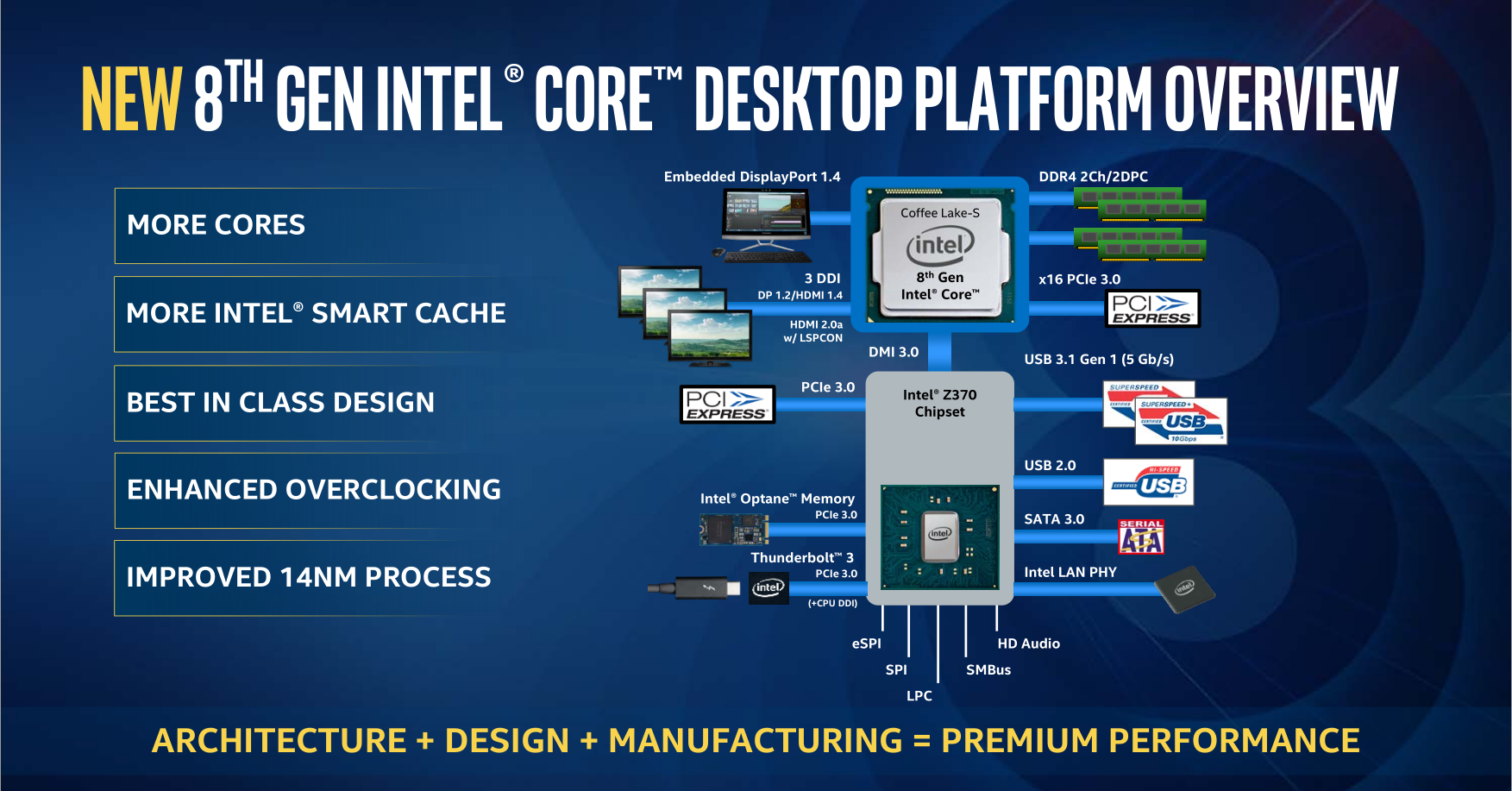
Coffee Lake is Intel’s eight generation of desktop processors. The biggest change of Coffee Lake from the 7th generation Intel desktop processors, Kaby Lake, is that the tech giant has upped the core count of their mainstream offerings from a maximum of 4-core, 8-thread setup to a maximum of 6-core, 12-thread arrangement. Intel’s i3 would now have 4 cores and 4 threads, the i5 would have 6 cores and 6 threads, and the i7 now has 6 cores and 12 threads.
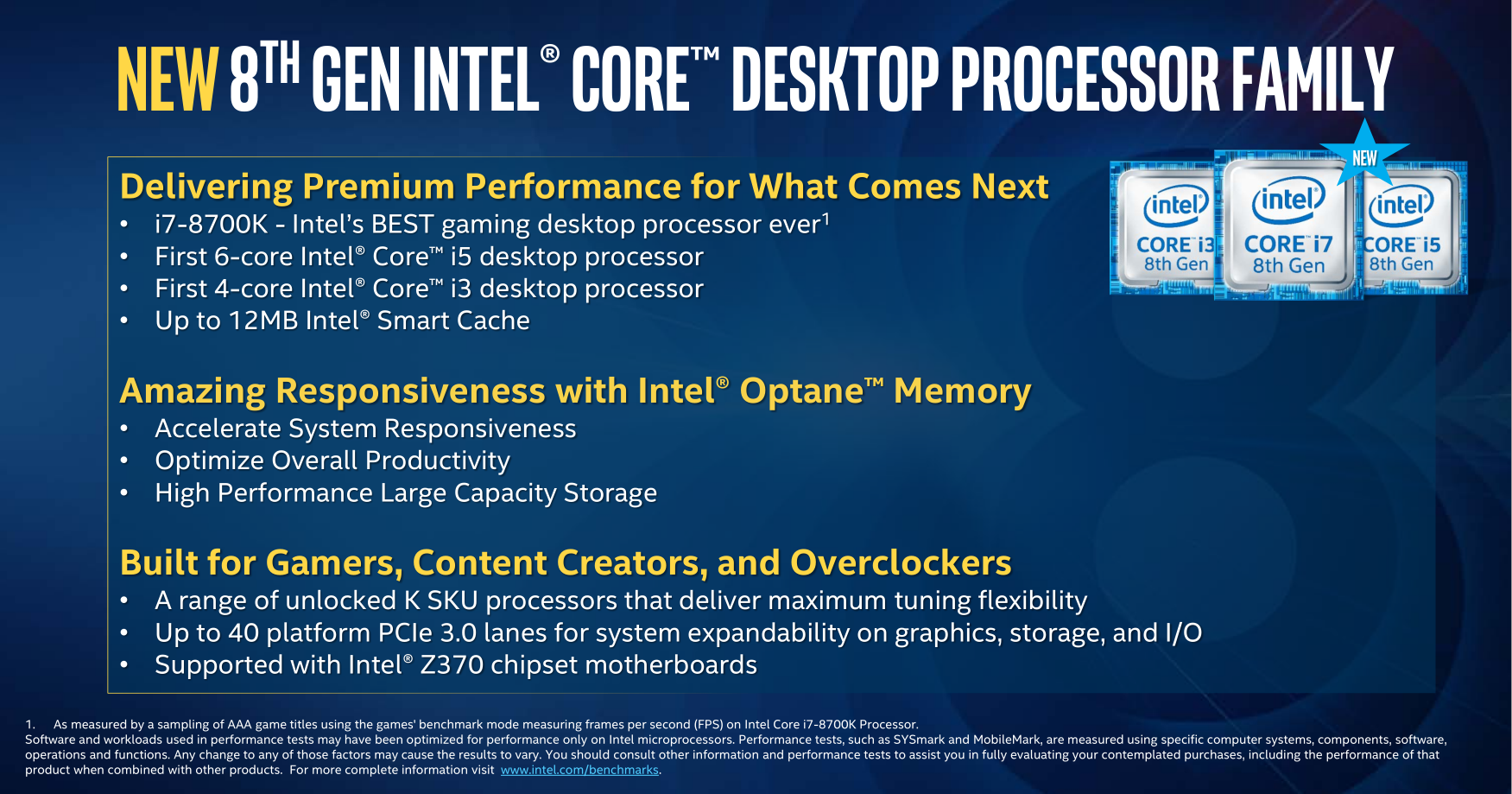
Despite the upped core count, Intel is still using its 14nm manufacturing process that has now been dubbed 14nm++. The name change is just cosmetic. Coffee Lake uses the same CPU and GPU architecture from Kaby Lake.
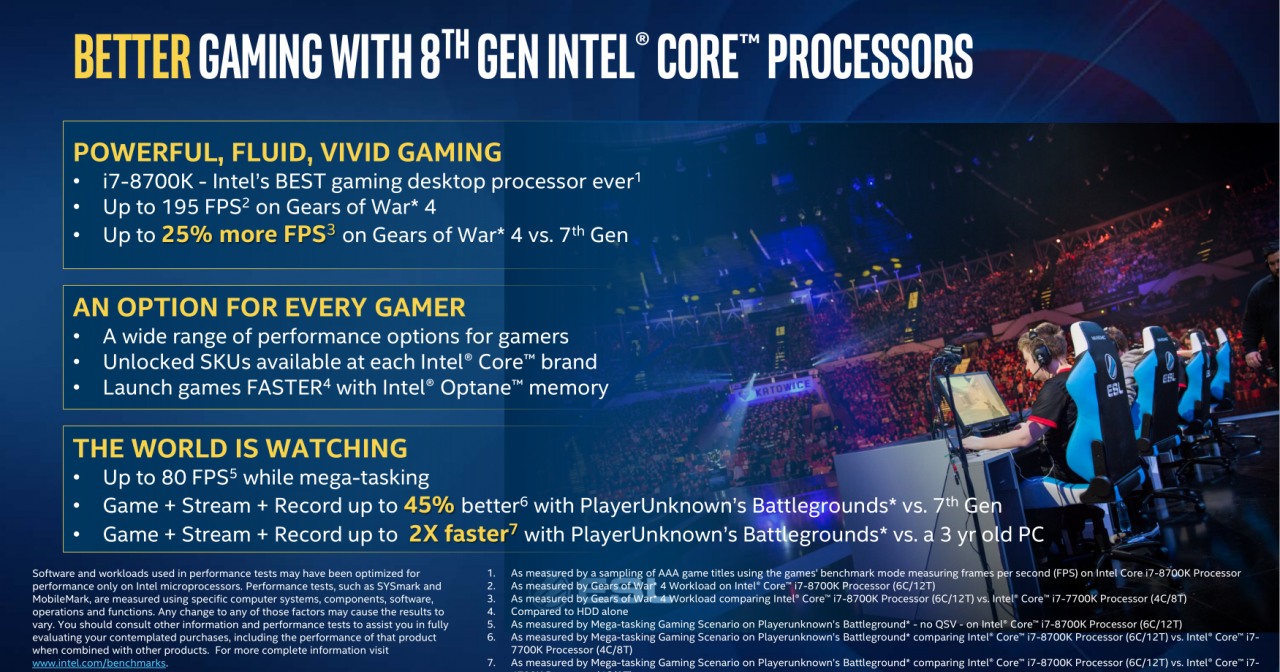
With the increased core count, Coffee Lake CPUs are now geared to take on workloads that require multiple cores such as editing, streaming, and sometimes, gaming. Intel is saying that their new i7, the 8700K, can get up to 25% more FPS and 45% better performance over the i7-7700K in “mega-tasking,” which means that you better overall performance if you’re system is doing multiple workloads such as playing and streaming at the same time.

Much like with their HEDT platform such as Skylake-X and Kaby Lake-X, the core count has decreased the base clock of the Coffee Lake processors compared to their previous generation siblings. For example, the i7-8700K now has a base clock of 3.7GHz instead of 4.2GHz of the i7-7700K. Despite its 500MHz disadvantage, the boost clock of the i7-8700K has been increased to 4.7GHz over the 4.5GHz of the i7-7700K.
Coffee Lake now officially supports DDR4-2666MHz memory as well as Thunderbolt 3. Of course, Optane Memory is also supported by Inte’s 8th generation processors. For the unfamiliar, Optane Memory acts as a cache for your hard drive or SSD to improve overall performance. Although we’ve heard from some of our sources that a full-fledged Optane SSD will be coming in the near future.
The Z370 Chipset
Of course, with a brand new generation comes a brand new chipset from Intel. Coffee Lake will be housed by Intel’s new Z370 chipset. The new chipset comes with Intel’s LGA 1151 v2 socket.
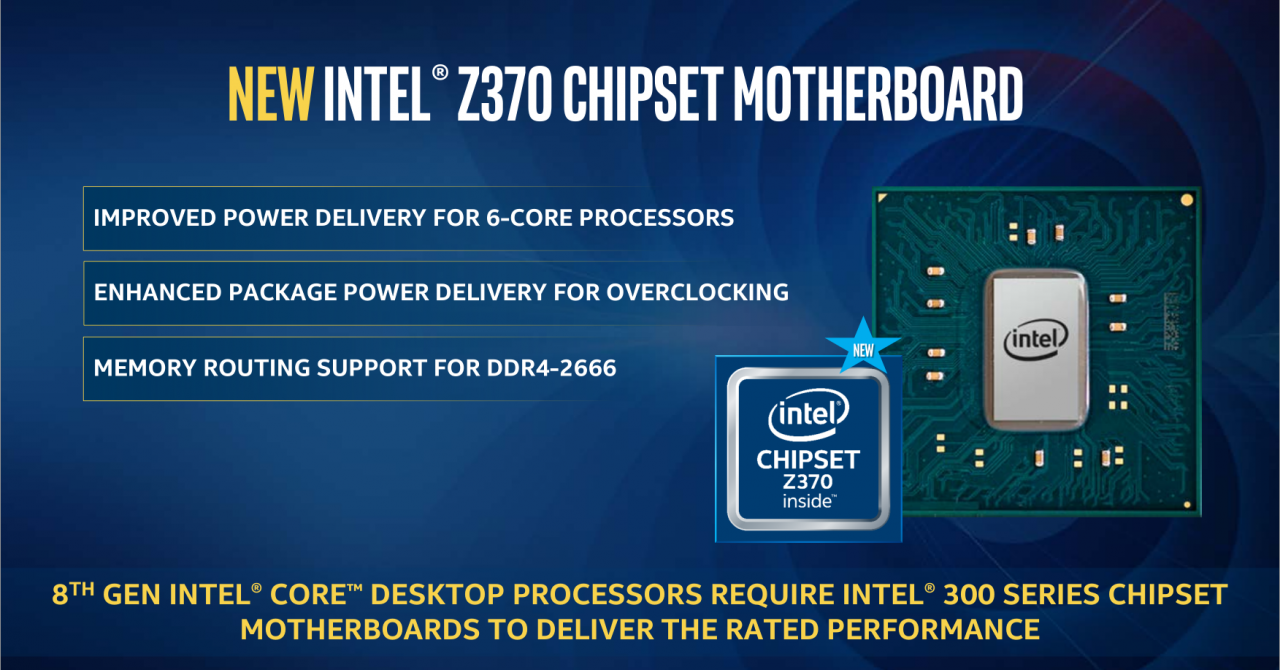
Despite having the same number of pins to Kaby Lake, Coffee Lake and Kaby Lake are not compatible with one another. It’s not Intel software-locking the two chipsets, but the sockets are physically different from one another. To improve power delivery for the upped the VCC pins from the 128 of Kaby Lake to the 146 of Coffee Lake.
Aside from the improved power delivery of the pins, the Z370 platform now has 24 lanes of PCIe 3.0 and up to a total of 14 USB ports, 10 of which can be dedicated to USB 3.1.
Now, let’s get on with the review.
Up Close with the MSI Z370 Gaming Pro Carbon AC
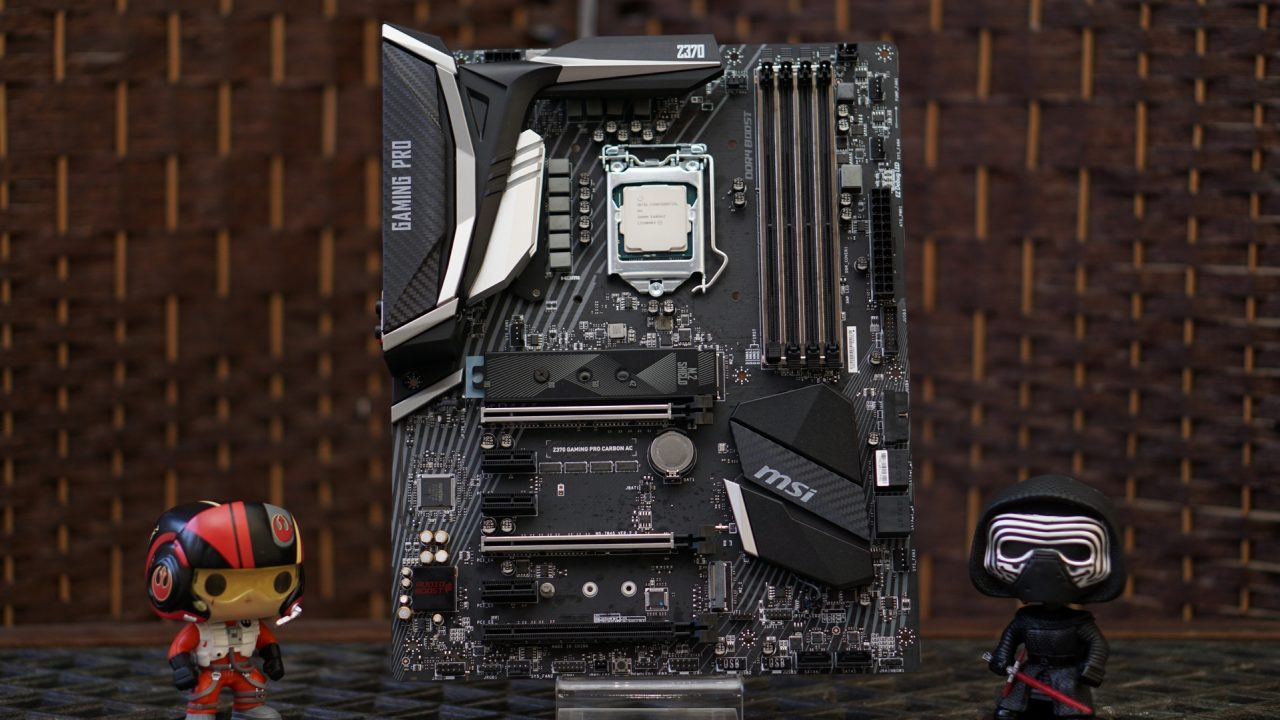
Much like other motherboards in MSI’s Gaming Pro Carbon range, the MSI Z370 Gaming Pro Carbon AC comes with a racing-inspired design with racing stripes embossed on the PCH, PCB, and on the I/O shroud. And of course, the motherboard comes with everyone’s favorite feature, RGB lighting which can be controlled through the MSI Gaming App.
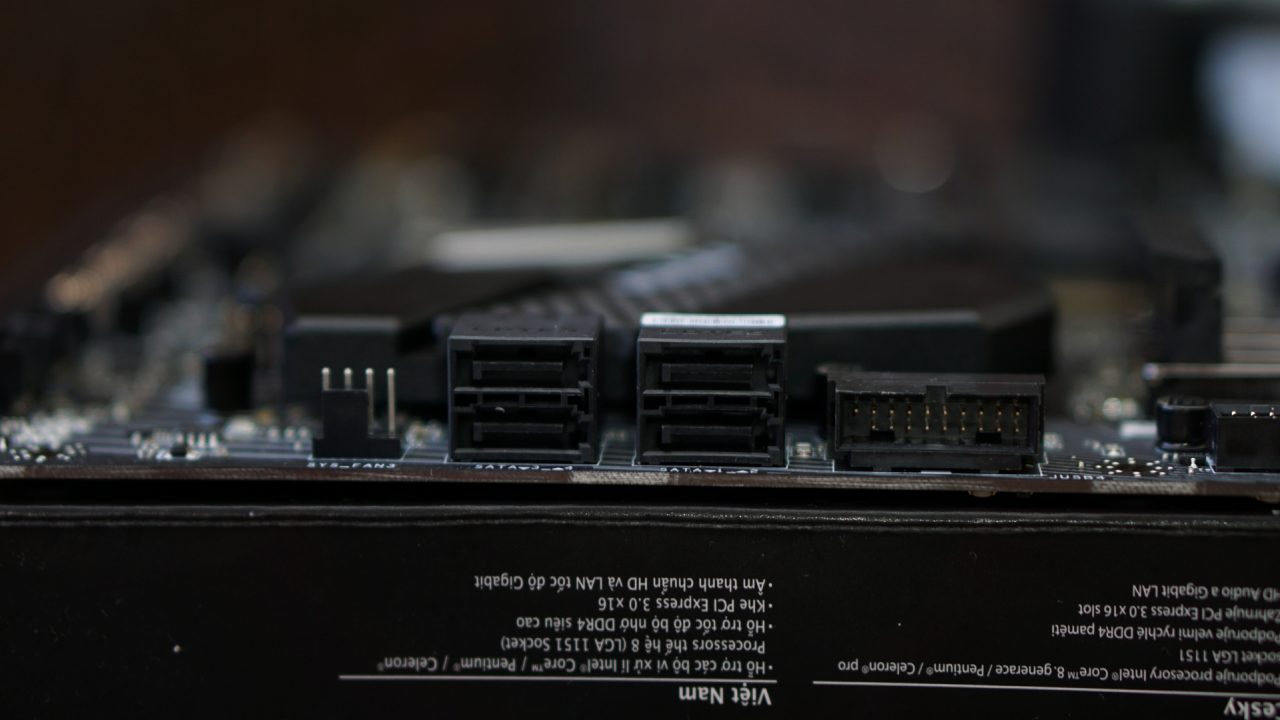
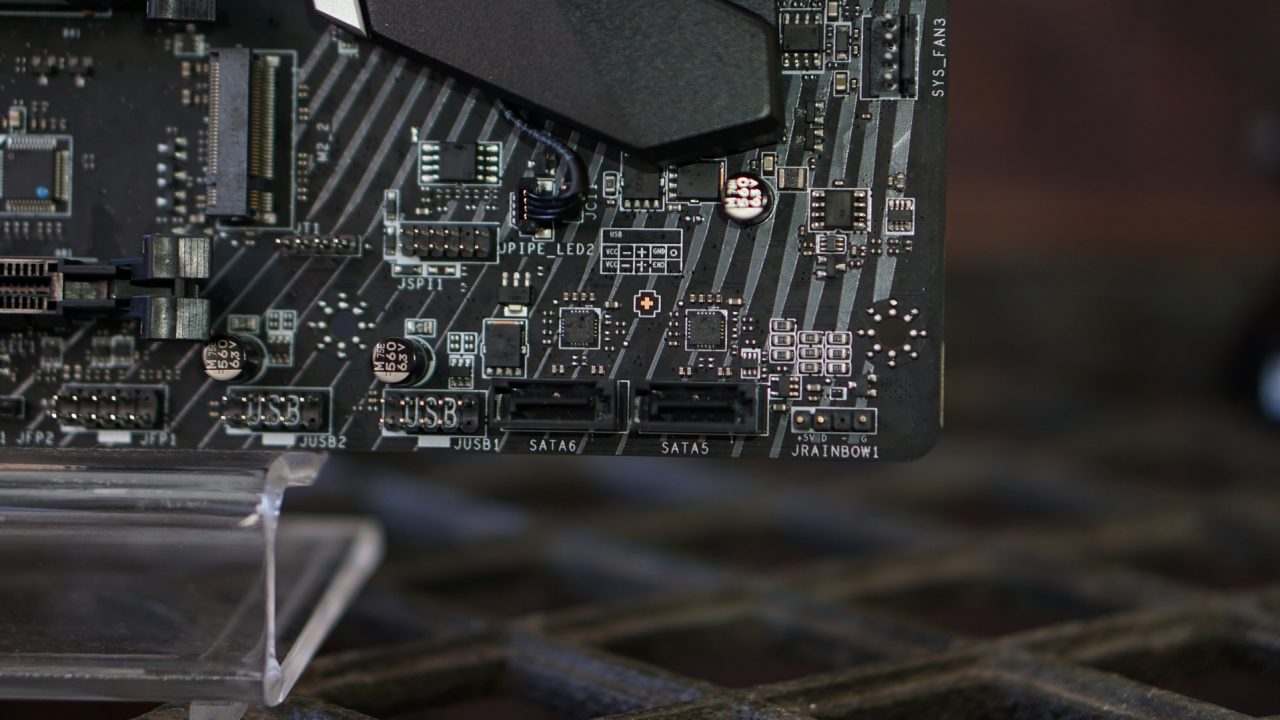
Storage is handled by six SATA III ports, four of which are located on the right-hand side of the motherboard while the remaining two are situated at the bottom of the board. U.2 is also supported given that you have a Turbo U.2 Host Card.
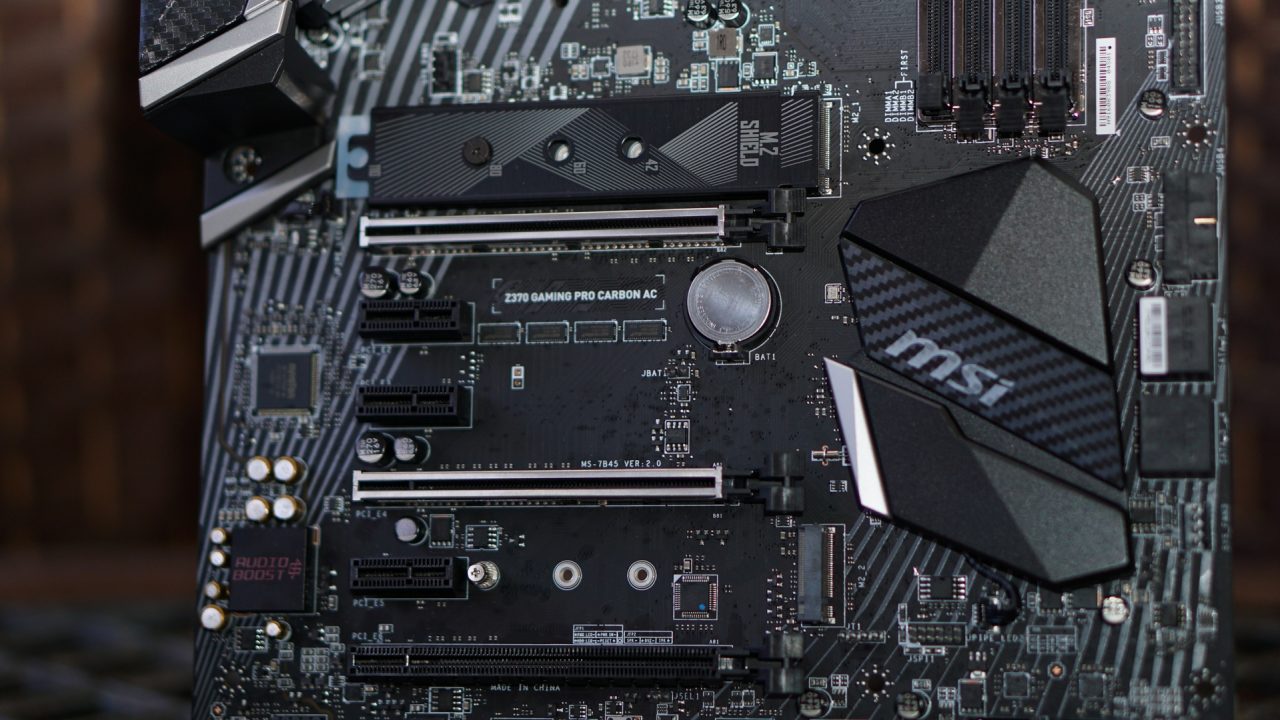
Faster storage media is available in the form of two M.2 sockets; one at the top of the first x16 PCIe slot while the second is near the last x16 PCIe slot. The top-most M.2 socket uses a beefier version of the MSI M.2 Shield to improve the thermal performance of your M.2 drive. Pretty standard options when it comes to storage media although we must say that the position of the bottom SATA ports is a bit annoying especially if you want to have a cleaner-looking build.

The MSI Z370 Gaming Pro Carbon AC has a 10+2 Phase design to deliver power to the CPU for better overclocking performance.

Aside from the heatsinks covering the VRMs, the CPU area of the MSI Z370 Gaming Pro Carbon AC is free from any kind of obstructions when installing large heatsinks like the Cryorig R1 Ultimate or Noctua NH-D15.
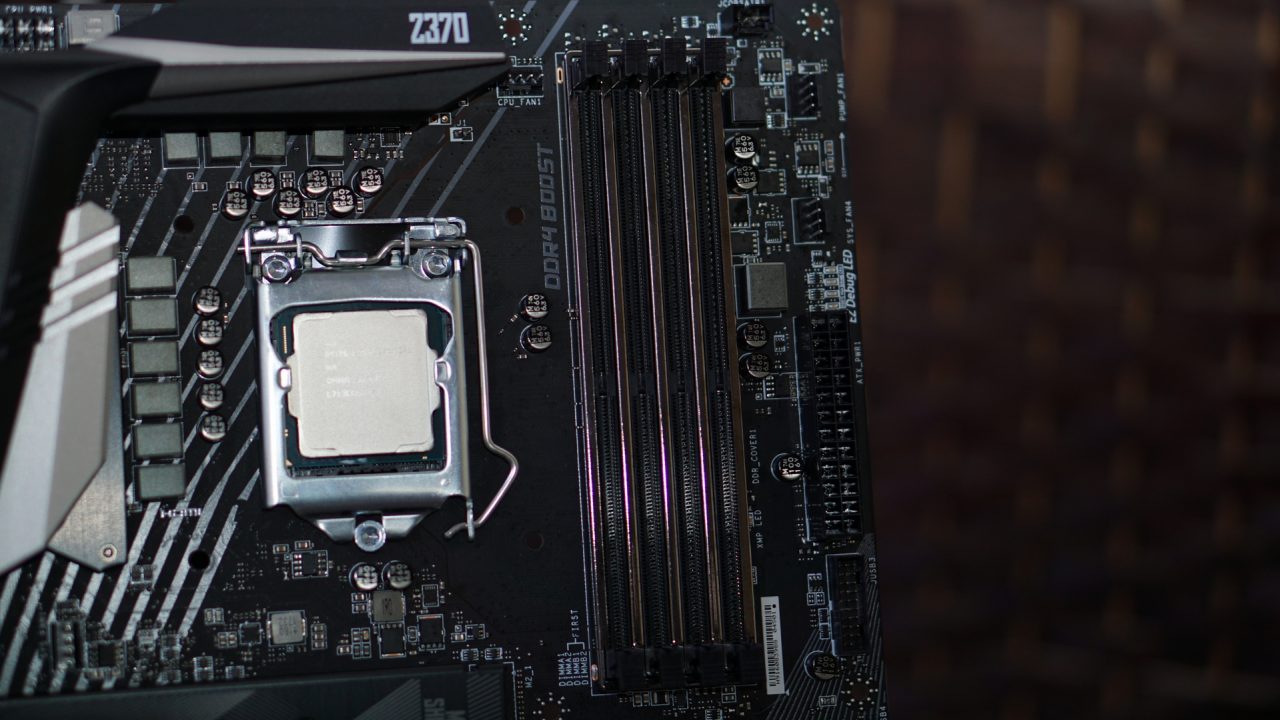
The four DIMM slots are reinforced is equipped with MSI’s “DDR4 Boost with Steel Armor,” which is a fancy name for optimizing the circuits of memory as well as reinforcing them with steel. As far as support go, the DIMM slots can hold four RAM sticks with speeds of up to DDR4 4000MHz.

Audio is handled by an ALC1220 Codec supplemented by MSI’s Nahimic software for better, cleaner audio output.

The MSI Z370 Gaming Pro Carbon AC has three PCIe 3.0 x16 slots (x16, x8, x4). The two top PCIe slots are reinforced with steel to better support heavy graphics cards. The board can run 2-way SLI or 3-way CrossFire. MSI has also thrown in three PCIe 3.0 x1 slots for those who need it.
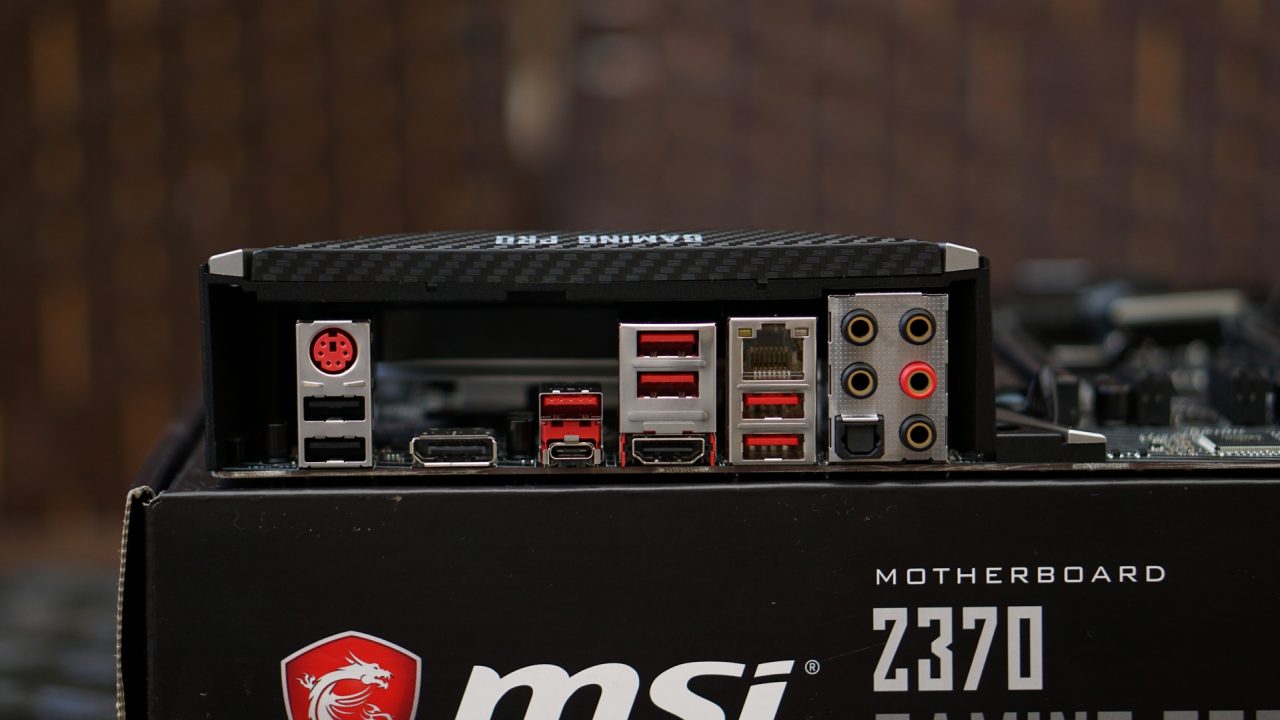
The rear I/O is composed of one PS2 combo port, two USB 2.0 Type-A, one USB 3.1 Gen2 Type-A, one USB 3.1 Gen2 Type-C, four USB 3.1 Gen1 Type-A ports, an HDMI and DisplayPort for display, an RJ-45 for Ethernet, five audio jacks, and a single S/PDIF Out.
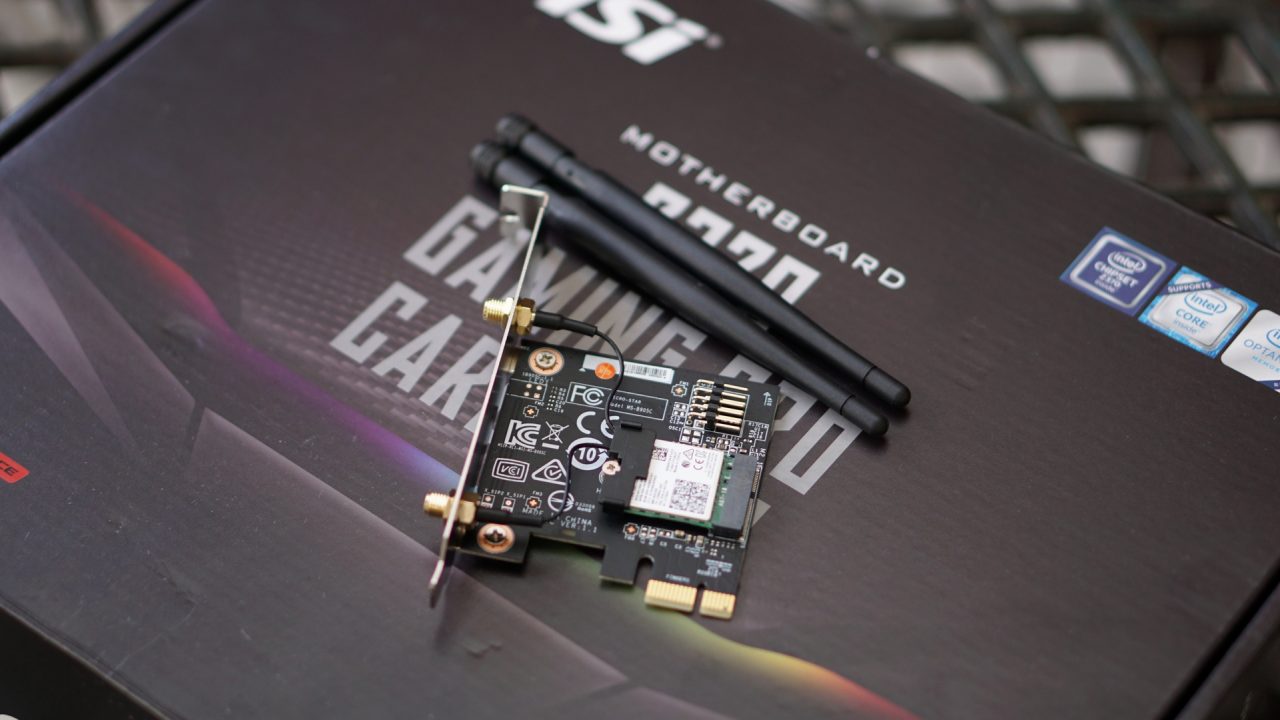
As for its AC moniker, the board comes with an Intel Dual Band Wireless-AC 8265 PCIe add-in card that supports 802.11 a/b/g/n/ac and supports both 2.4GHz and 5GHz bands. It also comes with two antennas to help with signal reception.
Much like its AMD cousin, the MSI X370 Gaming Pro Carbon, the Z370 version of the Gaming Pro Carbon is missing a Q-LED Post Code Reader. An important feature especially if you’re trying to check why your PC isn’t POSTing. MSI, however has something called EZ Debug Light to replace a traditional Q-LED Post Code Reader. Basically, there are LED lights in the CPU, GPU, and RAM areas that light up whenever your PC isn’t posting so you can quickly determine what component is causing the problem. It isn’t as detailed as a Q-LED Post Code Reader but it does help you quickly determine the issue.
BIOS
The MSI Z370 Gaming Pro Carbon AC comes with the brand’s CLICK BIOS 5 for its UEFI. It’s fairly simple to use especially its Easy Mode. More advanced users can go on to its Advanced Mode by pressing F7 where you can further tweak your overclock.
System, Overclocking, and Benchmarks
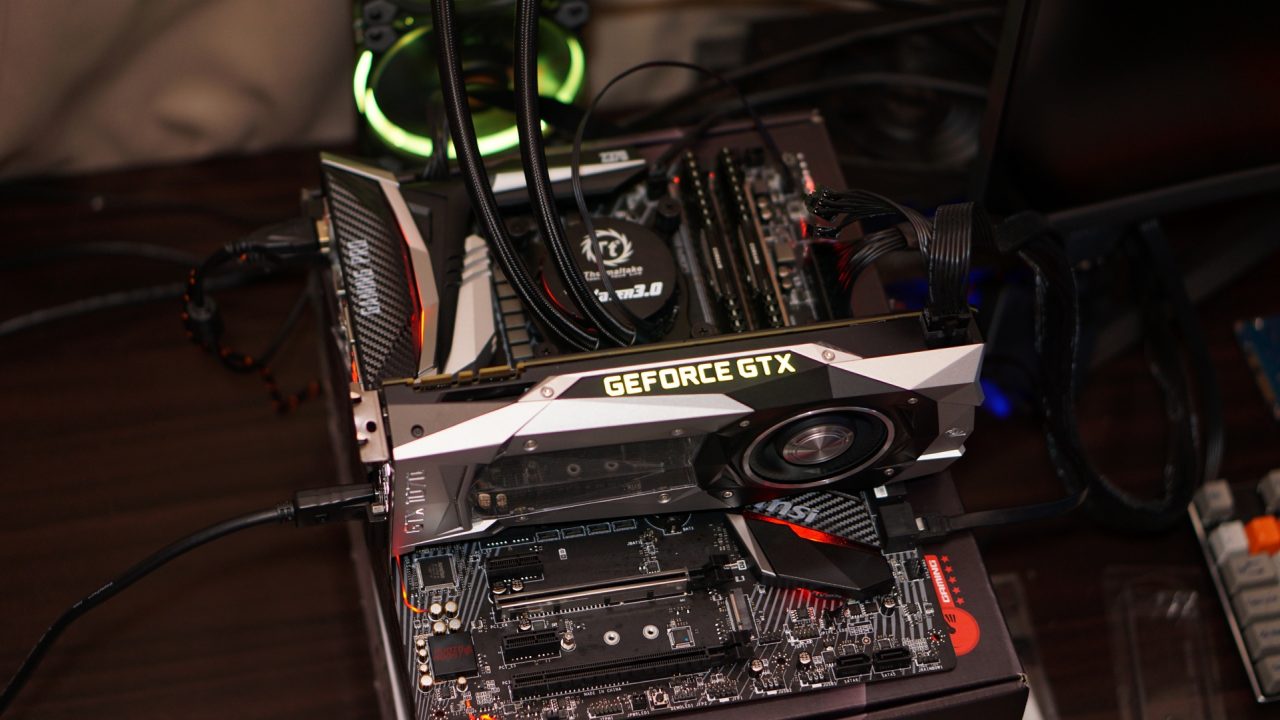
We equipped the MSI Z370 Gaming Pro Carbon AC with the following components to see how it would perform under our tests:
As far as overclocking goes, we were able to push our Intel Core i5-8600K at 5.1GHz at 1.35v. Any higher and the system would just crash whenever we put stress on the CPU despite providing more voltage.
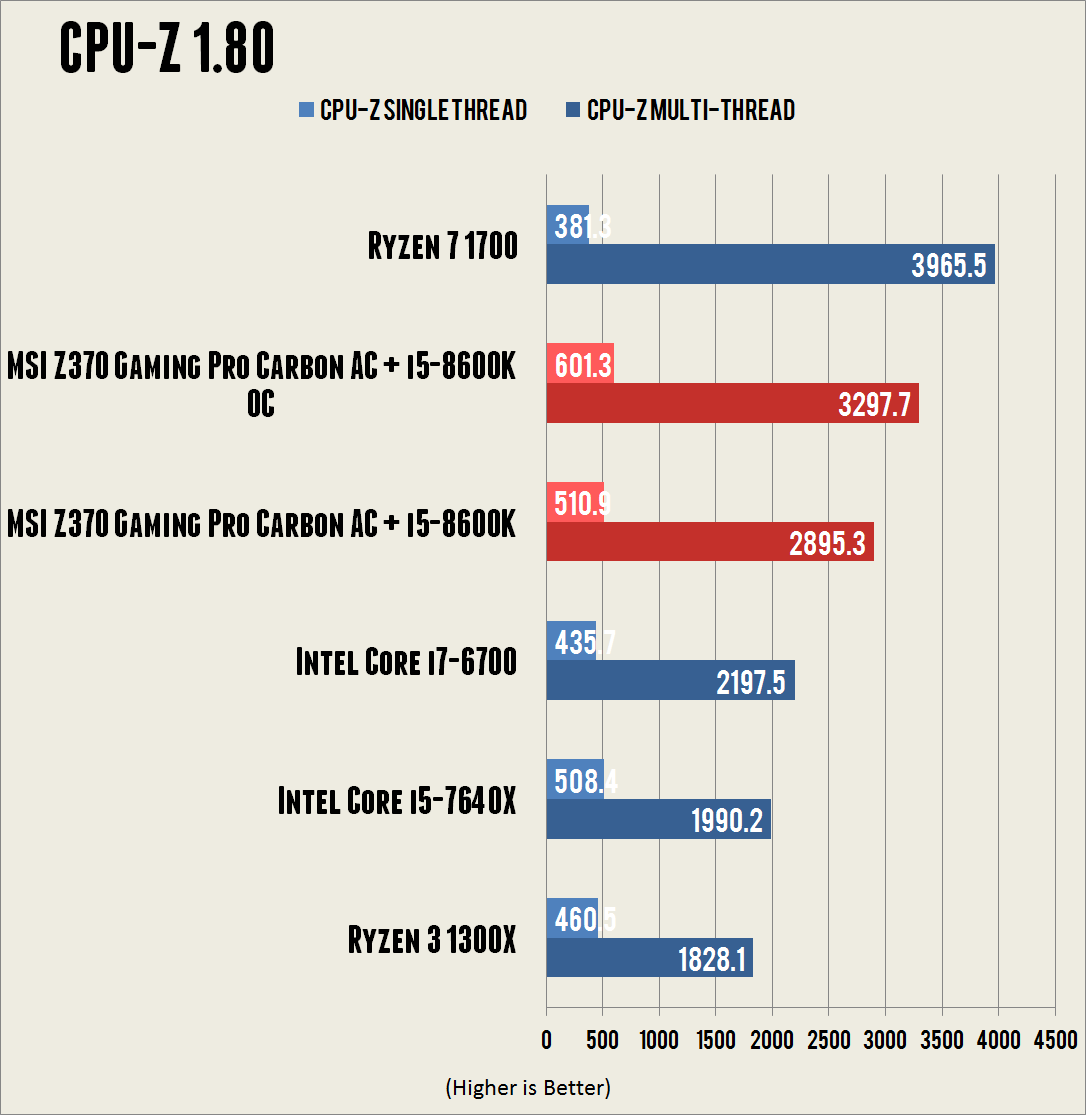
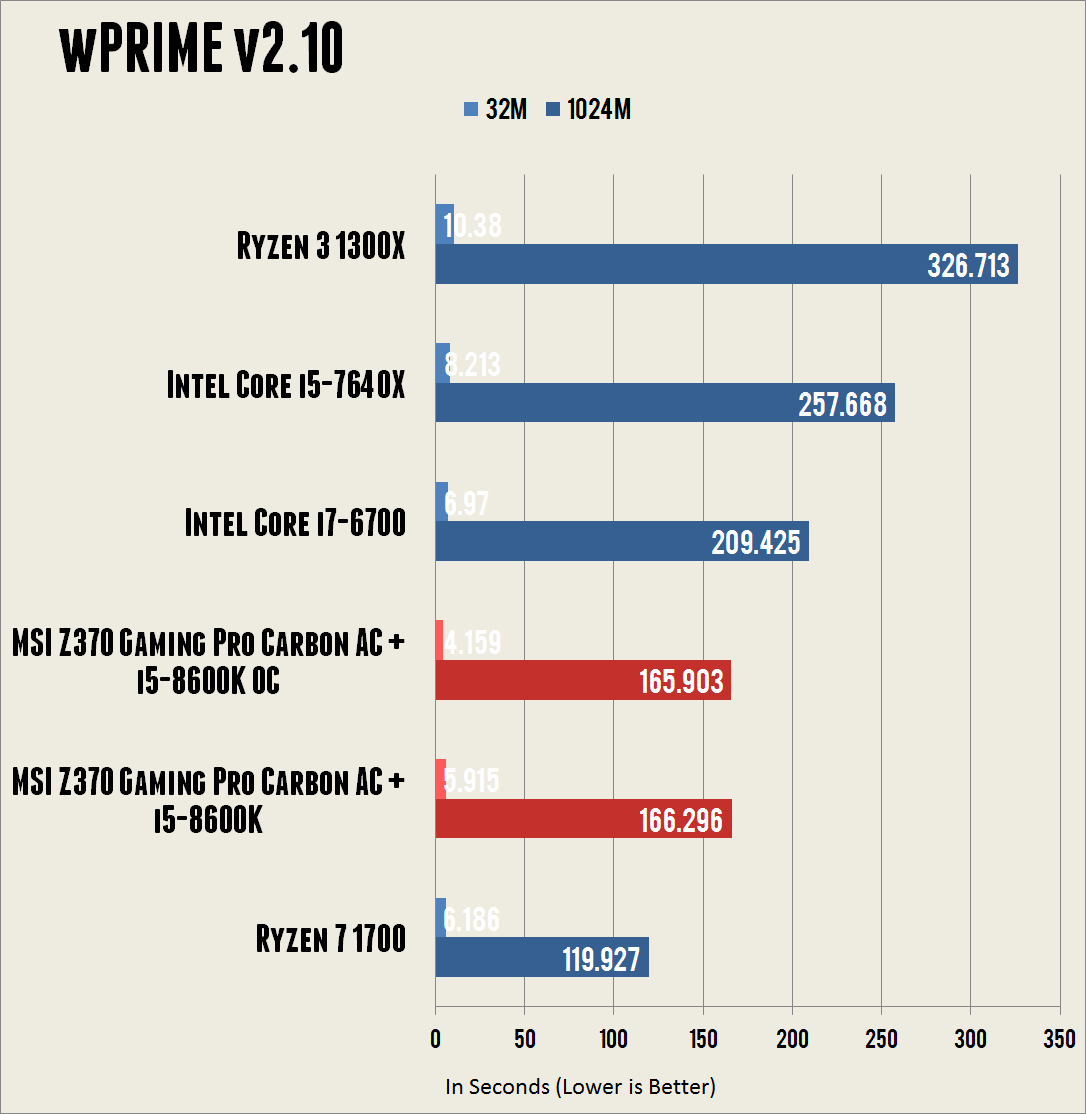
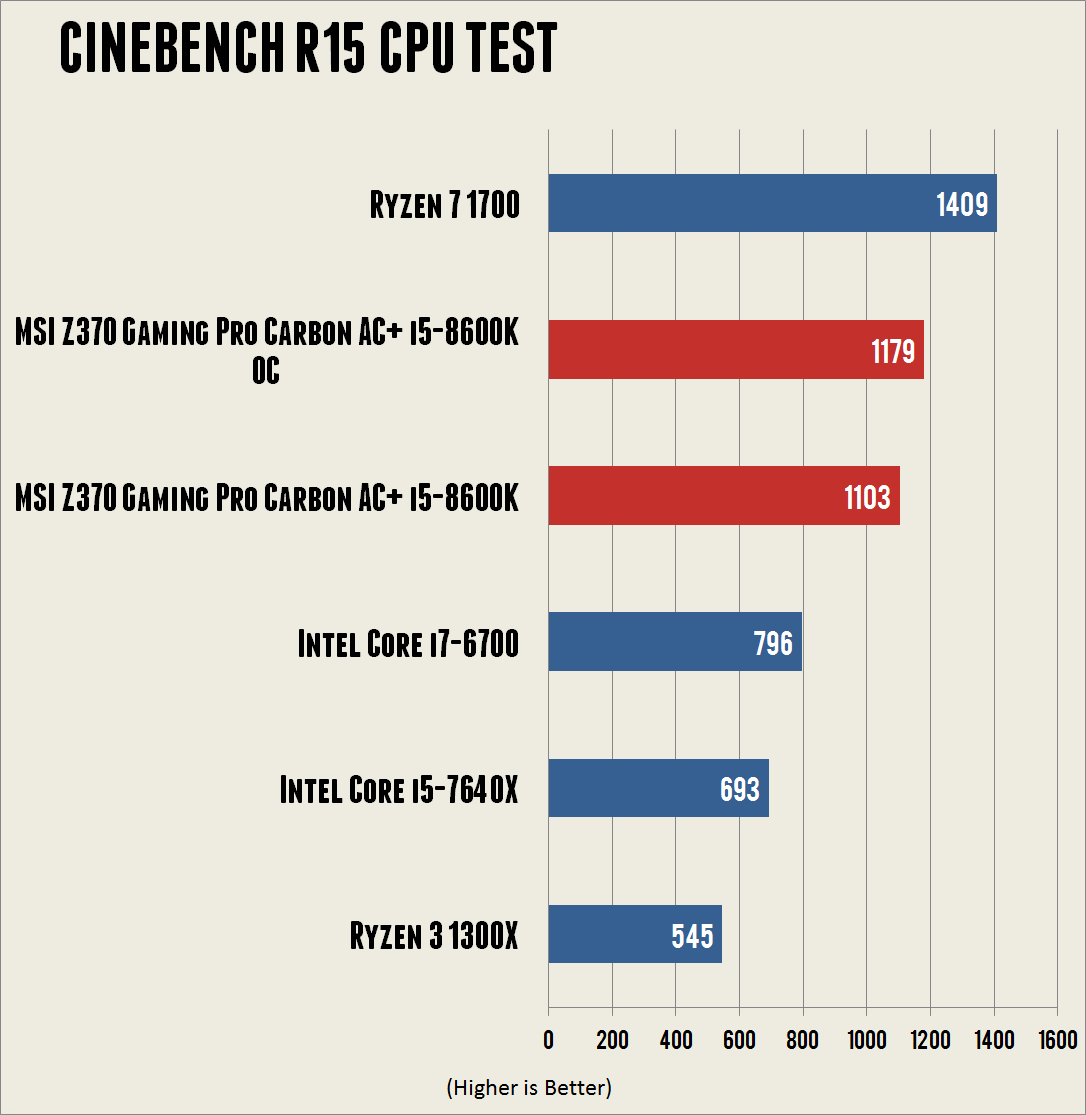
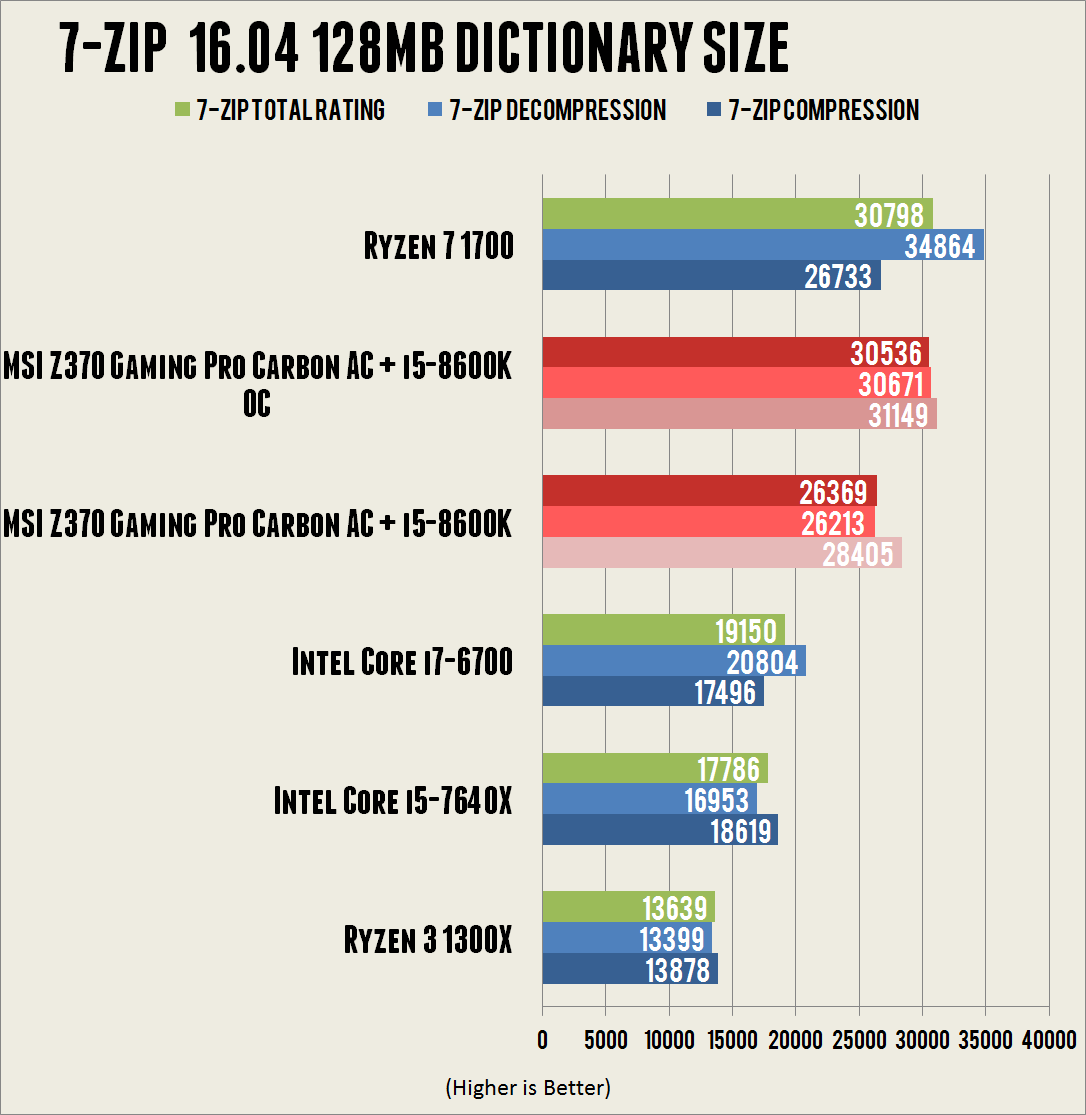

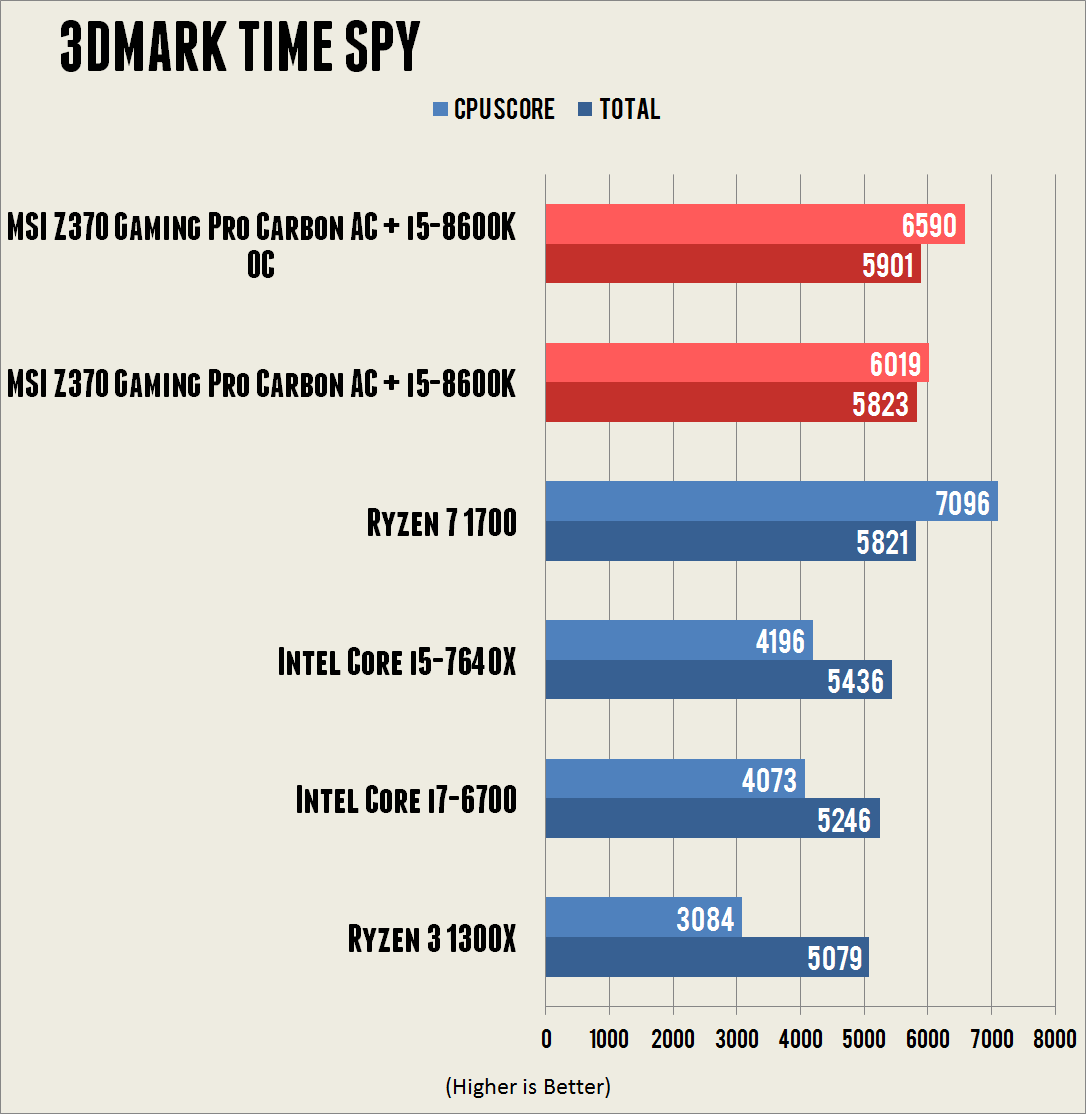
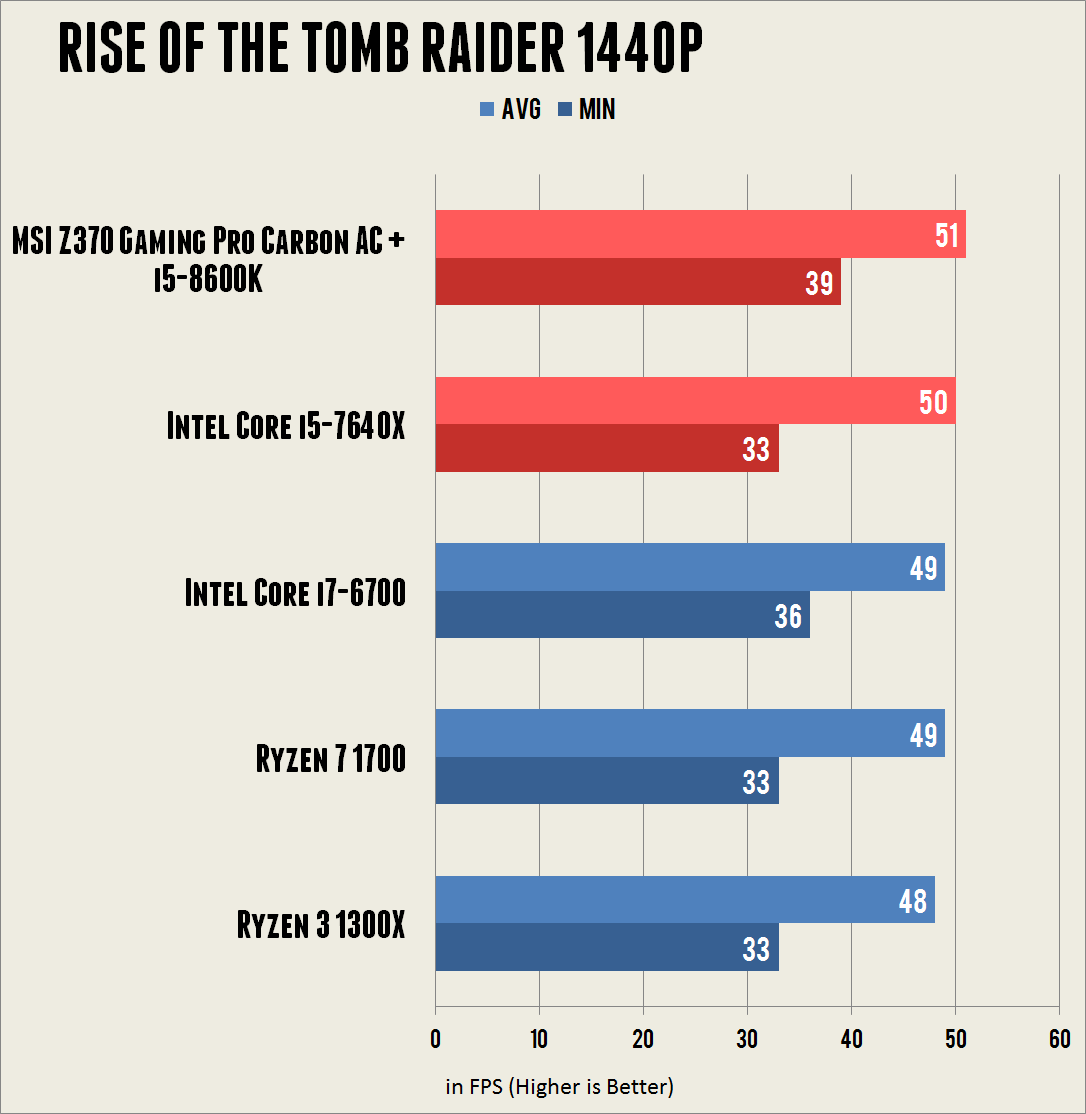
Conclusion
The MSI Z370 Gaming Pro Carbon AC is priced at PhP 12,800 and brings most features that you would want in that price range. Support for high-speed RAM, SLI and CrossFire support, a 10-phase power design, lots of USB 3.1 ports, and of course, RGB lighting.
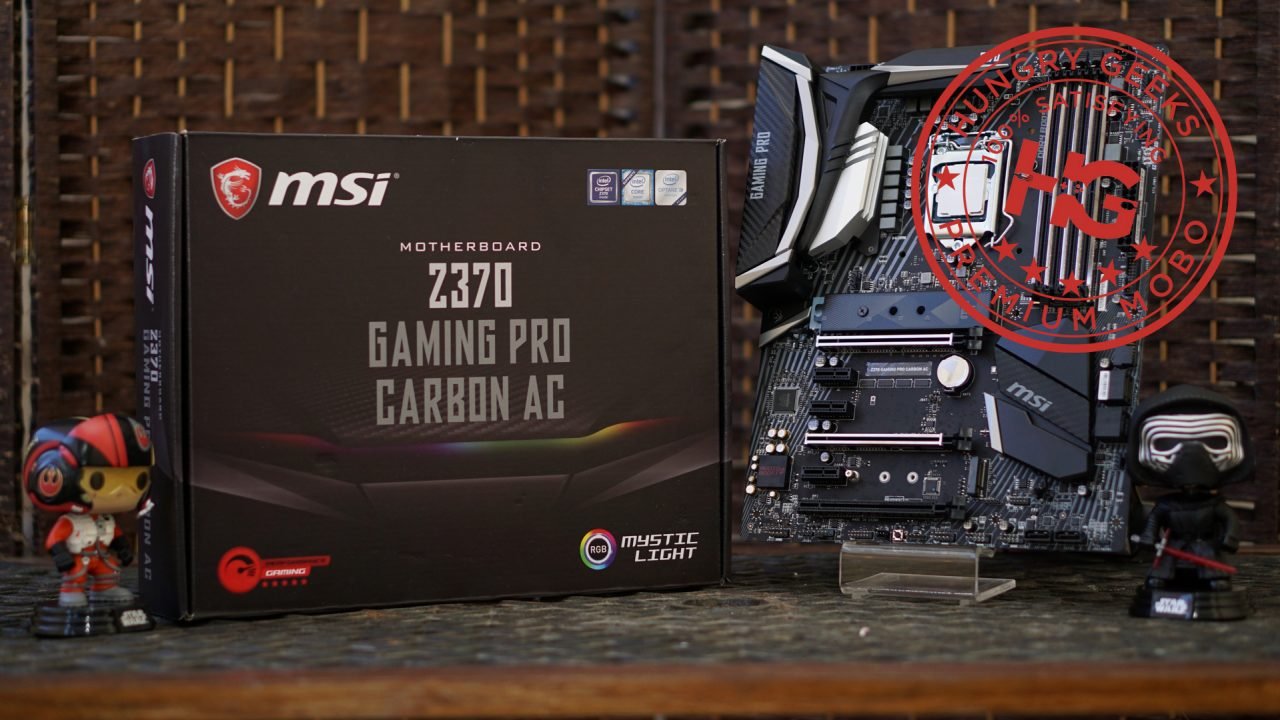
The only thing that we didn’t like about the motherboard is the missing Q-LED Post Code reader to help overclockers and people who are experiencing problems identify what went wrong in their setup. As we’ve mentioned, the Post Code Reader has been replaced with MSI’s EZ Debug Light, which does a good job of letting you know what component is acting up. Despite that, we still think the MSI Z370 Gaming Pro Carbon AC is a very good board. Thus, we’re giving it our Premium Motherboard award. If you’re looking for a sweet motherboard for your upcoming Coffee Lake build, give the MSI Z370 Gaming Pro Carbon AC a chance to prove itself.
